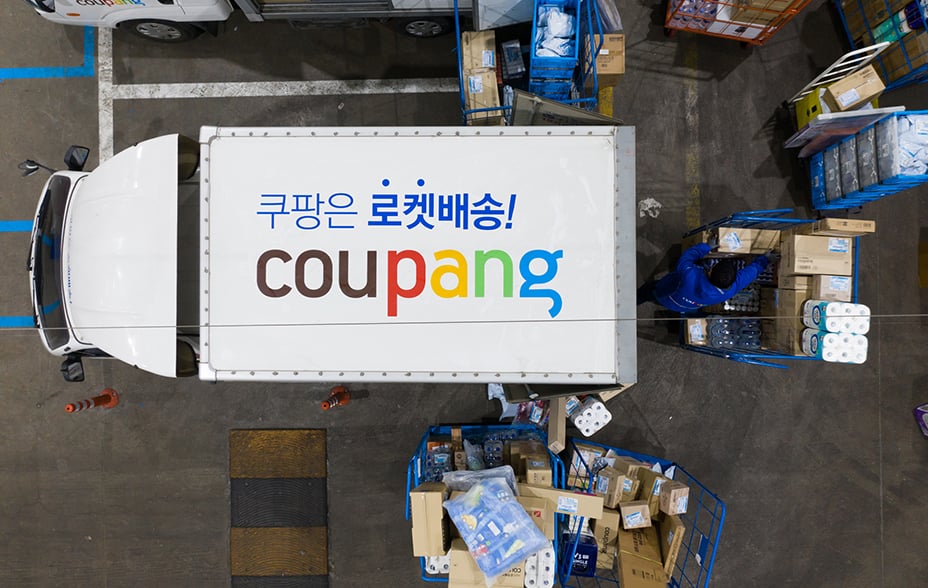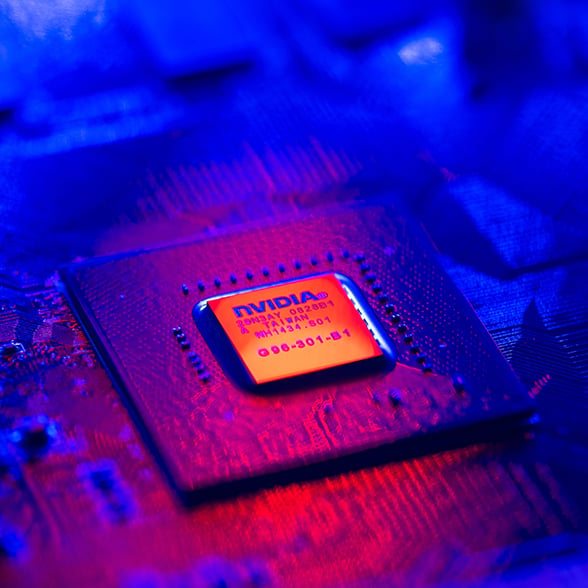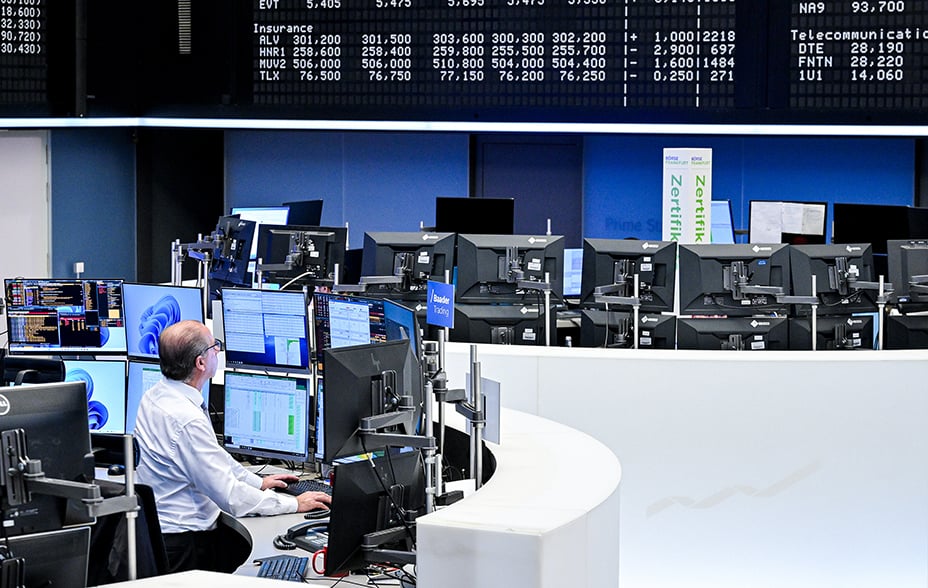Key points
- The Long Term Global Growth strategy has navigated many market crises since its launch 20 years ago
- Some of the strategy’s most successful investments were made in the aftermath of downturns, such as Amazon, Tesla and NVIDIA
- Looking to the next 20 years, the current market presents exciting opportunities to invest in companies that could become top contributors to portfolio performance

“Why are we so stupid?”
This was, verbatim, a question that a small group of Baillie Gifford investors asked themselves back in 2003, in the aftermath of the Dotcom Bubble’s implosion.
What bothered them was the fact that several attributes of successful investors – such as long-termism, low portfolio turnover, high concentration, benchmark-agnosticism, and a stock-specific valuation methodology – were well known, but rarely ever put into practice in the investment industry. The result? Manias and bubbles. Tulips and Dotcoms. Speculation instead of investment.
Therefore, a few months later in early 2004, we started an experiment. Going back to first principles on risk and reward, we launched the Long Term Global Growth (LTGG) strategy that would harness all of the attributes listed above.
It quickly became clear to the nascent LTGG team that the post-Dotcom years of the mid-2000s were replete with opportunities for those willing to invest differently
The team took a holding in Amazon in 2004 whose story is well-known to our clients today, but they also invested in a range of companies no longer held in the portfolio – such as industrial compressors company Atlas Copco, oil major Petrobras, and mining company Vale. Strikingly, all three still feature after Amazon as the top contributors to portfolio performance 20 years later.
More market crises would follow, such as the Global Financial Crisis of 2008-09, the European sovereign debt crisis in the early 2010s, and the US Taper Tantrum in 2018. Time and time again, despite bouts of painful market volatility and uncertainty, the aftermath of each downturn brought fresh opportunities.
Amid the turmoil, the team selected names such as Tencent, Baidu, Apple, Meta, Tesla and NVIDIA. They, like the earlier generation of names before them, would in due course ascend to the ranks of the portfolio’s top all-time contributors.
Now as the LTGG strategy celebrates its 20th anniversary, we find ourselves still in the wake of the 2021-22 post-Covid stock market decline – the second most severe drawdown in the history of the LTGG strategy (after the Global Financial Crisis). Much like we did back in 2003, we have sought to learn lessons from this recent period and refine our investment process for future, as described in our multiple writings to you over the past couple of years.
As challenging as it has been, we are cognisant that we are now in that most exciting of times again. It is a time in which rich opportunities abound. A time to plant the seeds for the portfolio giants of the future.
Opportunities
It is a false mental shortcut to assume that all opportunities are new. In fact, our greatest opportunities often reside inside the portfolio of existing holdings. This largely boils down to a matter of starting points.
The portfolio already contains what we believe to be some of the greatest and most adaptable growth companies in the world. Years of research and relationship-building give us the conviction to hold the very best of them at scale in the portfolio.
From such sizeable positions, their impact on portfolio performance (for better or worse) is often far greater than that of a new and smaller holding. For example, all things being equal, if the share price of an existing 2.5 per cent holding were to double in value, a new 1 per cent holding would need to quintuple in value to deliver the same contribution to portfolio performance.
A further reason to seize opportunities among existing LTGG holdings is their robust and strengthening fundamentals. Consider for example that, at time of writing, the weighted average revenue growth of the portfolio holdings is around 35 per cent year-on-year, versus around 21 per cent this time last year. Meanwhile, over 90 per cent of the portfolio is now self-financing, versus around 80 per cent a year ago.
The strong appear to be getting stronger in this challenging macroeconomic and geopolitical environment. This is precisely what we would expect from a portfolio of what we believe to be among the most adaptable growth companies on the planet.
All the while, the deep structural transformations that many LTGG holdings are either pioneering or disproportionately benefitting from remain unstoppable – such as electrification of transport and energy storage, revolutionary healthcare solutions, and artificial intelligence. And yet, despite the recent equity market highs that have been largely driven by a very narrow segment of stocks (notably the ‘Magnificent Seven’), temporary dislocations still exist between the fundamentals of many exciting growth companies and their share prices.
All this presents us with compelling opportunities.
With this in mind, we have recently added to our holding in Meituan, the Chinese service-on-demand platform. At a mid-teen P/E ratio and just over 1x 2024 sales, the stock feels like a metaphor for current investor sentiment in the Chinese market. The share price has round-tripped back to 2019 levels. Yet sales have grown five-fold over the last five years and gross margins are rising.
Our addition reflects our greater confidence in management following a meeting with the founder CEO and CFO during our research trip to China in January, in which we discussed Meituan’s expansion from food delivery into grocery, pharmaceutical and health testing.

© Meituan

© Coupang
Assumptions for significant upside from here seem unchallenging, though we continue to monitor the as-yet-unresolved competitive battle with Douyin for the in-store business.
Our addition to Meituan follows additions made to SEA (the southeast Asian e-commerce, gaming and fintech platform) and Coupang (the South Korean e-commerce platform) in late 2023, both of which similarly presented opportunities to buy more shares at undemanding entry points in companies that are progressing very well toward our investment theses.
Of course, we are also looking beyond the existing portfolio to new ideas. The fact that four new purchases have met the high bar for entry into the portfolio in the past quarter alone reflects the many exciting new opportunities we are finding in the current environment. The diverse group of names include:
- Luxury brand Moncler – what if this strong, durable brand can steadily compound returns for the next decade or beyond? As we have learned from Hermès, held since our inception in 2004, the wonderous power of compounding can generate exceptional multi-bagger returns.
- Warehouse automation business Symbotic – what if this company pioneers the US transition towards automated warehouses (the majority of which today are entirely manual)?
- Electric pick-up truck company Rivian – what if Rivian can continue a rapacious pace of production (currently doubling year-on-year), gradually move from the premium segment towards the mass market, and progress toward double-digit operating margins? As we know from holding Tesla since 2013, this is a challenging capital-intensive business, but with potential for outsized returns.
- Latin American fintech Nu Holdings – what if Nubank can replicate (or surpass) its rapid rollout in Brazil, where over half the adult population has become Nubank customers in just over a decade, in the other Latin American countries to which it is now expanding?
The risk of low risk
For all this talk of opportunities, what about the risks? This was also a topic of our “Why are we so stupid?” musings back in 2003.
If we are to achieve LTGG’s objective to deliver exceptional long-term returns for our clients, and if we recognise the asymmetry of returns in the portfolio (i.e. only very few stocks drive the vast majority of performance), then the overwhelming risk that we must optimise for is always the risk of missed opportunity.
The risk of bouts of volatility along the way, while painful, is ultimately irrelevant to LTGG’s long-term objective – not least because the highest-growth stocks over the long term are also the most volatile.
This is why we need to be clear that volatility, as uncomfortable as it can be, is not in fact risk. In contrast, the risk of permanent loss of capital on failed investments is a real risk, but such losses (up to 100 per cent maximum on any single investment) are vastly outweighed if even just a few exceptional multi-baggers are held at scale and over time – such as those mentioned at the outset of this article and as evidenced in our 20-year performance attribution. For the LTGG portfolio, failure to identify multi-bagger opportunities is therefore the greatest risk of all.
Crucially, LTGG is not – and has never been – about trying to minimise risk in this portfolio, at least in the sense of conventional risk metrics. Indeed, a low-risk approach would amplify the risk of missed opportunity, which could be deleterious to achieving our LTGG investment objective.
Mark Urquhart, one of the investors present in our “Why are we so stupid?” discussion 20 years ago, co-founder of the LTGG strategy and head of the team today, sums this up as follows:
Without embracing being wrong, I wouldn’t have got some things right: most probably there wouldn’t have been Amazon without eBay; Hermès without Burberry; Tesla without Q-Cells; and PDD without Alibaba. The asymmetry of equity markets mean that my successes are disproportionately more valuable than my failures. But this wonderful feature of only being able to lose 100 per cent in any individual holding is very hard to hold onto when faced with an individual holding whose share price is down 50, 75 or even 95 per cent.
To me this speaks to some of the behavioural challenges of being wrong – human beings are wired to be praised, to be liked, to look clever and to be right. Admitting mistakes is hard, which is what leads to widespread loss aversion. No one ever got sacked for owning IBM, or the FAANGs or the current plat du jour in the form of the Magnificent Seven.
In seeking transformational businesses for our portfolio, it is inevitable that some will be damp squibs – they won’t take off, they will be outcompeted, the economics don’t work, or a better innovation comes along. This is ok. This is indeed normal with long-run statistics showing us most businesses fail with only 25 per cent making it to 15 years or more. In looking for outliers we should expect failures – this is easy to say but hard to do. There is embarrassment with both colleagues and clients – we are meant to be really smart, so how did we make such a dumb investment decision?
In fact, the only thing I can say for certain that will happen in the rest of my career is that I will be wrong. But this doesn’t matter; in fact I embrace it.
Missed opportunity also explains why we’re sometimes criticised for being slow to sell holdings. An example from the past quarter is Alibaba. Having initially taken a holding in China’s leading e-commerce platform Alibaba in 2014, the company grew to become one of China’s largest companies with an over $830 billion market capitalisation at its 2020 peak.
Since then, Alibaba has endured regulatory scrutiny, heightened competition (not least from PDD and Meituan, also in the portfolio), and dwindling foreign investor confidence in China as a whole.
Consequently, its market capitalisation currently stands at around $180 billion – roughly a round trip in absolute share price terms since our initial purchase and deeply disappointing after a decade of ownership. We had held onto the shares during the decline in recent years because our fundamental research and company engagement led us to the view that Alibaba’s e-commerce business had a decent chance of a revival, that the growth of its cloud business would continue, and that the previously-announced spinoff of the cloud business would realise value – all of which could have presented an attractive opportunity for upside.

© Alibaba

© PDD Holdings
However, as our confidence in these potential growth drivers gradually waned over time, we trimmed our holding and – only once the case appeared materially broken – sold. Always in the search of opportunity, we put the proceeds towards the new purchase of Symbotic.
Have we sold Alibaba too late? Probably. Or have we sold too early? Possibly – time will tell. Faced with the risk of missed opportunity, we must always satisfy ourselves that we don’t sell too soon. As a reminder, many of our most painful missed opportunities in the past 20 years have been companies that we sold too early, such as Microsoft (2007) and Apple (2014), which subsequently delivered multi-bagger returns.
More important than selling too late or too soon is whether the decision to sell is squarely anchored in our investment process – ie doing what we say we do. For the LTGG team, this means applying our 10 Question Stock Research Framework. For Alibaba (and Microsoft and Apple), we sold because we believed it could no longer answer those 10 questions with sufficient confidence to justify its place in the portfolio.
As ever, asymmetry matters. Alibaba’s disappointing round-trip in share price terms is vastly outweighed by the 5x return of its competitor PDD since we took a holding in 2018.
One may also criticise us for sometimes being too slow to buy a holding. One example from the past quarter is Nu Holdings. We conducted a review of this company in early 2023 and declined to invest at a market capitalisation of around $20 billion.
Following a year of further research and a recent three-hour meeting with the founder CEO and CFO, we finally took a holding – at a market capitalisation of over $50 billion. The 2-3x upside that we missed is painful. It echoes previous cases of missed upside, such as Netflix – which we first examined in 2011 but only invested in 2015, during which time the share price rose roughly four-fold.
Importantly, however, we followed our investment process. We took a holding in Nu Holdings now because its business model and competitive advantage are more thoroughly evidenced, profitability is proven, and its product/market fit has derisked and repeated in multiple geographies – enabling us to answer our 10 questions with greater confidence than before.
This has allowed us to entertain a scenario whereby Nu could achieve $10 billion net income within five years (compared to ten years when we looked at the company a year ago). On an undemanding 25x P/E ratio (vs. around 33x today), we believe Nu Holdings could plausibly be worth five times as much as it is today during our investment horizon.
In other words, we believe there is still vast opportunity here and it could be a risk not to invest. Coming back to our Netflix experience for illustration, while we missed the upside between our initial review and our decision to invest, it has still been a 9-bagger since we invested.
Probable optimism
It is often assumed that the LTGG team spends its days solely dreaming of the blue sky. Unbridled optimism can look naïve. In instances where it’s wrong, it can be value destructive.

But this characterisation of LTGG is misplaced. Yes, we can and must imagine what a blue sky scenario might look like for the companies in which we invest for the LTGG portfolio, because failure to do so could lead to massive missed opportunities. But every blue sky scenario that we consider is accompanied by (sometimes multiple) central and bear case scenarios. The fact that we tend to spend a disproportionate amount of time focussing on the blue sky scenarios is because Mr. Market spends a disproportionate amount of time focussing on the central and bear case scenarios. An ‘average’ scenario based on market consensus may generate returns that are…well…average. In contrast, we seek out the exceptional, and so we must spend time reflecting on what might go right.
Moreover, and unlike some of our peers, we attach a probability to every scenario we design. While the probability we ascribe to a scenario may turn out to be very wrong, it isn’t pulled out of thin air; it is an evaluation based on months, if not years, of fundamental quantitative and qualitative research.
What level of probability are we looking for? As a reminder, we shared a Baillie Gifford paper a decade ago entitled Blue sky and base rates. Based on thirty years of data, the analysis found there is just a five per cent chance that an investment selected at random in the index goes up fivefold over the next five years. This is the base rate. Therefore, we can have high conviction in a blue sky scenario without necessarily ascribing a very high probability – a better-than-five-per-cent probability may suffice to identify big winners.
By means of example, here is a blue sky scenario for new purchase Symbotic, the warehouse automation company.
From revenues of under $2 billion this year, we believe Symbotic could grow its topline by 25-30 per cent year-on-year to reach revenues of $20 billion within a decade. This is not unreasonable, as the company not only has an impressive order backlog but is also becoming faster and more capital efficient at deploying its automation modules to its customers’ warehouses. By that time, its business would account for only around five per cent of the current total addressable market for large warehouse operators in the US. The company would be very lowly penetrated in an absolutely enormous market that has very few competitors. In addition to revenues from the deployment of its modules, recurring software operation fees could likely become a growing part of the total revenue mix.
Being conservative, even if we were to assume the P/S ratio more than halves over the next decade to 5x, this would imply a market capitalisation of $100 billion (vs. around $20 billion at time of purchase). A greater-than-five-per-cent probability feels altogether plausible for this scenario.
Moreover, Symbotic is now also targeting the SME market, which could be at least as large if not larger than its core market, plus it may also expand into the chilled storage market to unlock yet more growth.
Maybe this blue sky scenario for Symbotic isn’t sufficiently azure; time will tell. After all, there are several examples from LTGG’s 20-year experience whereby our optimism has proved too tame.
For example, even when we forced ourselves to consider an ‘ultra-sunny’ blue sky scenario for NVIDIA in our original review back in 2016 which charted a possible path to a $500 billion market capitalisation within a decade.
A 25x return for shareholders – it fell far short of imagining NVIDIA’s $2.2 trillion valuation today.
From here, our continued research gives us confidence that NVIDIA can continue to grow multiples over the next five to ten years.

© NVIDIA
Conclusion
Twenty years from now, on the 40th anniversary of the LTGG strategy, it is probable that we – or more likely our successors (some of whom we think are already in the team) – will look back on the events of 2021-22 and recognise that the aftermath presented a once-in-a-generation opportunity to invest in exciting growth companies.
Our successors may note that some of these companies would grow to become the portfolio’s next giants. By 2044, it is altogether likely that a small handful will have joined the ranks of the top contributors to all-time LTGG performance, alongside the generations before them.
Not all holdings will enjoy such success and that’s fine of course. A core learning from that decisive discussion on “Why are we so stupid?” and the subsequent 20 years of managing the LTGG portfolio is that we must run the risk of hunting the leviathan opportunities, even if we only catch a few.
The worst thing we could do would be to pull in our horns and not catch any at all.
| 2020 | 2021 | 2022 | 2023 | 2024 | |
| LTGG Composite | 10.7 | 104.4 | -18.1 | -18.1 | 26.2 |
| MSCI ACWI | -10.8 | 55.3 | 7.7 | -7.0 | 23.8 |
| 1 year | 5 years | 10 years | Since inception* | |
| LTGG Composite | 26.2 | 13.9 | 14.7 | 12.1 |
| MSCI ACWI | 23.8 | 11.5 | 9.2 | 8.3 |
*Inception date 29 February 2004.
Source: Baillie Gifford & Co and MSCI. US Dollars.
Past performance is not a guide to future results. Changes in the investment strategies, contributions or withdrawals may materially alter the performance and results of the portfolio. Net of fees returns have been calculated by reducing the gross return by the highest annual management fee for the composite. All investment strategies have the potential for profit and loss.
Risk factors
The views expressed should not be considered as advice or a recommendation to buy, sell or hold a particular investment. They reflect opinion and should not be taken as statements of fact nor should any reliance be placed on them when making investment decisions.
This communication was produced and approved in April 2024 and has not been updated subsequently. It represents views held at the time of writing and may not reflect current thinking.
Potential for profit and loss
All investment strategies have the potential for profit and loss, your or your clients’ capital may be at risk. Past performance is not a guide to future returns.
This communication contains information on investments which does not constitute independent research. Accordingly, it is not subject to the protections afforded to independent research, but is classified as advertising under Art 68 of the Financial Services Act (‘FinSA’) and Baillie Gifford and its staff may have dealt in the investments concerned.
All information is sourced from Baillie Gifford & Co and is current unless otherwise stated.
The images used in this communication are for illustrative purposes only.
Important information
Baillie Gifford & Co and Baillie Gifford & Co Limited are authorised and regulated by the Financial Conduct Authority (FCA). Baillie Gifford & Co Limited is an Authorised Corporate Director of OEICs.
Baillie Gifford Overseas Limited provides investment management and advisory services to non-UK Professional/Institutional clients only. Baillie Gifford Overseas Limited is wholly owned by Baillie Gifford & Co. Baillie Gifford & Co and Baillie Gifford Overseas Limited are authorised and regulated by the FCA in the UK.
Persons resident or domiciled outside the UK should consult with their professional advisers as to whether they require any governmental or other consents in order to enable them to invest, and with their tax advisers for advice relevant to their own particular circumstances.
Financial intermediaries
This communication is suitable for use of financial intermediaries. Financial intermediaries are solely responsible for any further distribution and Baillie Gifford takes no responsibility for the reliance on this document by any other person who did not receive this document directly from Baillie Gifford.
Europe
Baillie Gifford Investment Management (Europe) Limited provides investment management and advisory services to European (excluding UK) clients. It was incorporated in Ireland in May 2018. Baillie Gifford Investment Management (Europe) Limited is authorised by the Central Bank of Ireland as an AIFM under the AIFM Regulations and as a UCITS management company under the UCITS Regulation. Baillie Gifford Investment Management (Europe) Limited is also authorised in accordance with Regulation 7 of the AIFM Regulations, to provide management of portfolios of investments, including Individual Portfolio Management (‘IPM’) and Non-Core Services. Baillie Gifford Investment Management (Europe) Limited has been appointed as UCITS management company to the following UCITS umbrella company; Baillie Gifford Worldwide Funds plc. Through passporting it has established Baillie Gifford Investment Management (Europe) Limited (Frankfurt Branch) to market its investment management and advisory services and distribute Baillie Gifford Worldwide Funds plc in Germany. Similarly, it has established Baillie Gifford Investment Management (Europe) Limited (Amsterdam Branch) to market its investment management and advisory services and distribute Baillie Gifford Worldwide Funds plc in The Netherlands. Baillie Gifford Investment Management (Europe) Limited also has a representative office in Zurich, Switzerland pursuant to Art. 58 of the Federal Act on Financial Institutions (“FinIA”). The representative office is authorised by the Swiss Financial Market Supervisory Authority (FINMA). The representative office does not constitute a branch and therefore does not have authority to commit Baillie Gifford Investment Management (Europe) Limited. Baillie Gifford Investment Management (Europe) Limited is a wholly owned subsidiary of Baillie Gifford Overseas Limited, which is wholly owned by Baillie Gifford & Co. Baillie Gifford Overseas Limited and Baillie Gifford & Co are authorised and regulated in the UK by the Financial Conduct Authority.
Hong Kong
Baillie Gifford Asia (Hong Kong) Limited 柏基亞洲(香港)有限公司 is wholly owned by Baillie Gifford Overseas Limited and holds a Type 1 and a Type 2 license from the Securities & Futures Commission of Hong Kong to market and distribute Baillie Gifford’s range of collective investment schemes to professional investors in Hong Kong. Baillie Gifford Asia (Hong Kong) Limited 柏基亞洲(香港)有限公司 can be contacted at Suites 2713–2715, Two International Finance Centre, 8 Finance Street, Central, Hong Kong. Telephone +852 3756 5700.
South Korea
Baillie Gifford Overseas Limited is licensed with the Financial Services Commission in South Korea as a cross border Discretionary Investment Manager and Non-discretionary Investment Adviser.
Japan
Mitsubishi UFJ Baillie Gifford Asset Management Limited (‘MUBGAM’) is a joint venture company between Mitsubishi UFJ Trust & Banking Corporation and Baillie Gifford Overseas Limited. MUBGAM is authorised and regulated by the Financial Conduct Authority.
Australia
Baillie Gifford Overseas Limited (ARBN 118 567 178) is registered as a foreign company under the Corporations Act 2001 (Cth) and holds Foreign Australian Financial Services Licence No 528911. This material is provided to you on the basis that you are a “wholesale client” within the meaning of section 761G of the Corporations Act 2001 (Cth) (“Corporations Act”). Please advise Baillie Gifford Overseas Limited immediately if you are not a wholesale client. In no circumstances may this material be made available to a “retail client” within the meaning of section 761G of the Corporations Act.
This material contains general information only. It does not take into account any person’s objectives, financial situation or needs.
South Africa
Baillie Gifford Overseas Limited is registered as a Foreign Financial Services Provider with the Financial Sector Conduct Authority in South Africa.
North America
Baillie Gifford International LLC is wholly owned by Baillie Gifford Overseas Limited; it was formed in Delaware in 2005 and is registered with the SEC. It is the legal entity through which Baillie Gifford Overseas Limited provides client service and marketing functions in North America. Baillie Gifford Overseas Limited is registered with the SEC in the United States of America.
The Manager is not resident in Canada, its head office and principal place of business is in Edinburgh, Scotland. Baillie Gifford Overseas Limited is regulated in Canada as a portfolio manager and exempt market dealer with the Ontario Securities Commission (‘OSC’). Its portfolio manager licence is currently passported into Alberta, Quebec, Saskatchewan, Manitoba and Newfoundland & Labrador whereas the exempt market dealer licence is passported across all Canadian provinces and territories. Baillie Gifford International LLC is regulated by the OSC as an exempt market and its licence is passported across all Canadian provinces and territories. Baillie Gifford Investment Management (Europe) Limited (‘BGE’) relies on the International Investment Fund Manager Exemption in the provinces of Ontario and Quebec.
Israel
Baillie Gifford Overseas Limited is not licensed under Israel’s Regulation of Investment Advising, Investment Marketing and Portfolio Management Law, 5755–1995 (the Advice Law) and does not carry insurance pursuant to the Advice Law. This material is only intended for those categories of Israeli residents who are qualified clients listed on the First Addendum to the Advice Law.
MSCI Legal Disclaimer
Source: MSCI. MSCI makes no express or implied warranties or representations and shall have no liability whatsoever with respect to any MSCI data contained herein. The MSCI data may not be further redistributed or used as a basis for other indexes or any securities or financial products. This report is not approved, endorsed, reviewed or produced by MSCI. None of the MSCI data is intended to constitute investment advice or a recommendation to make (or refrain from making) any kind of investment decision and may not be relied on as such.
96434 10046415





